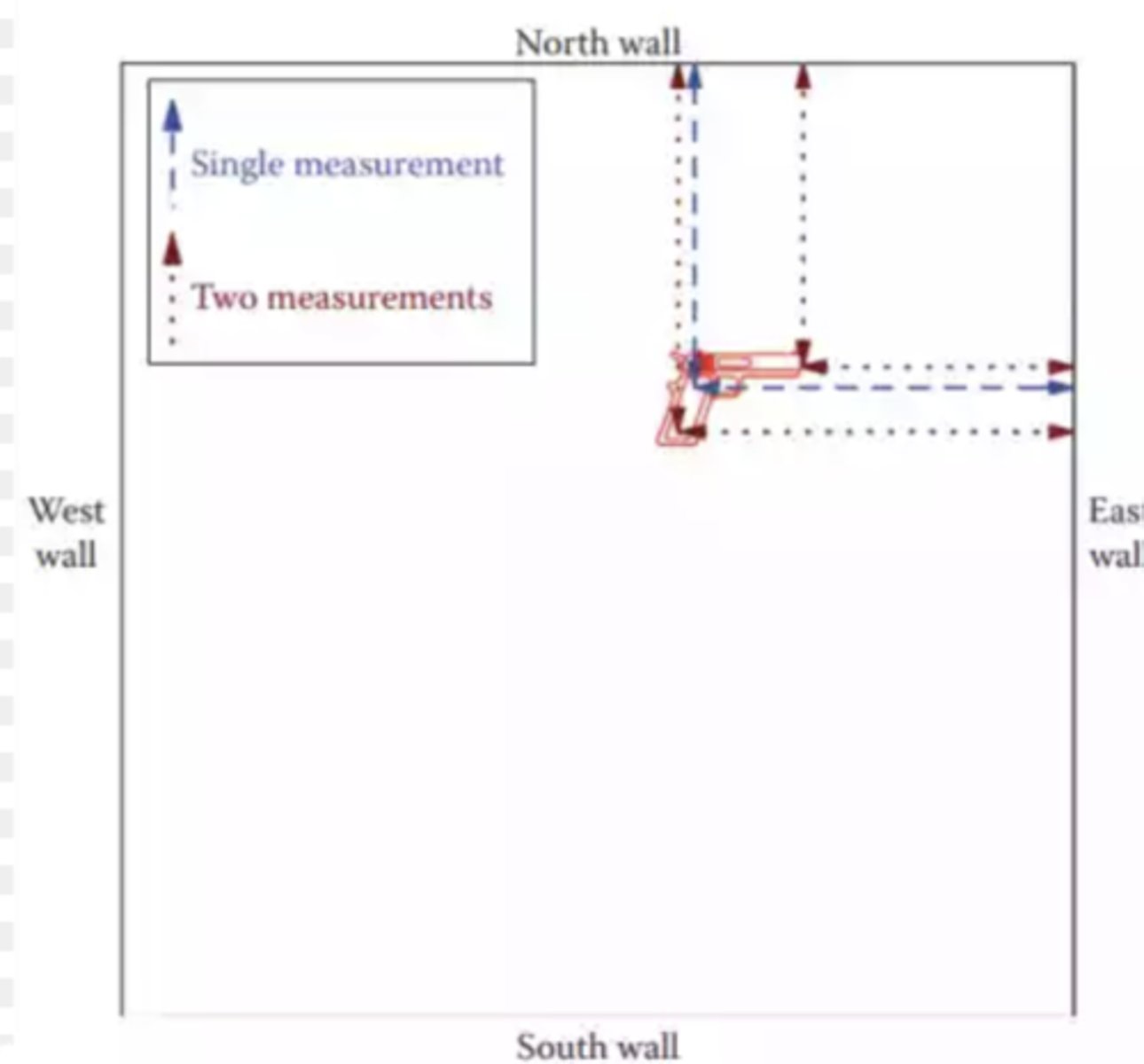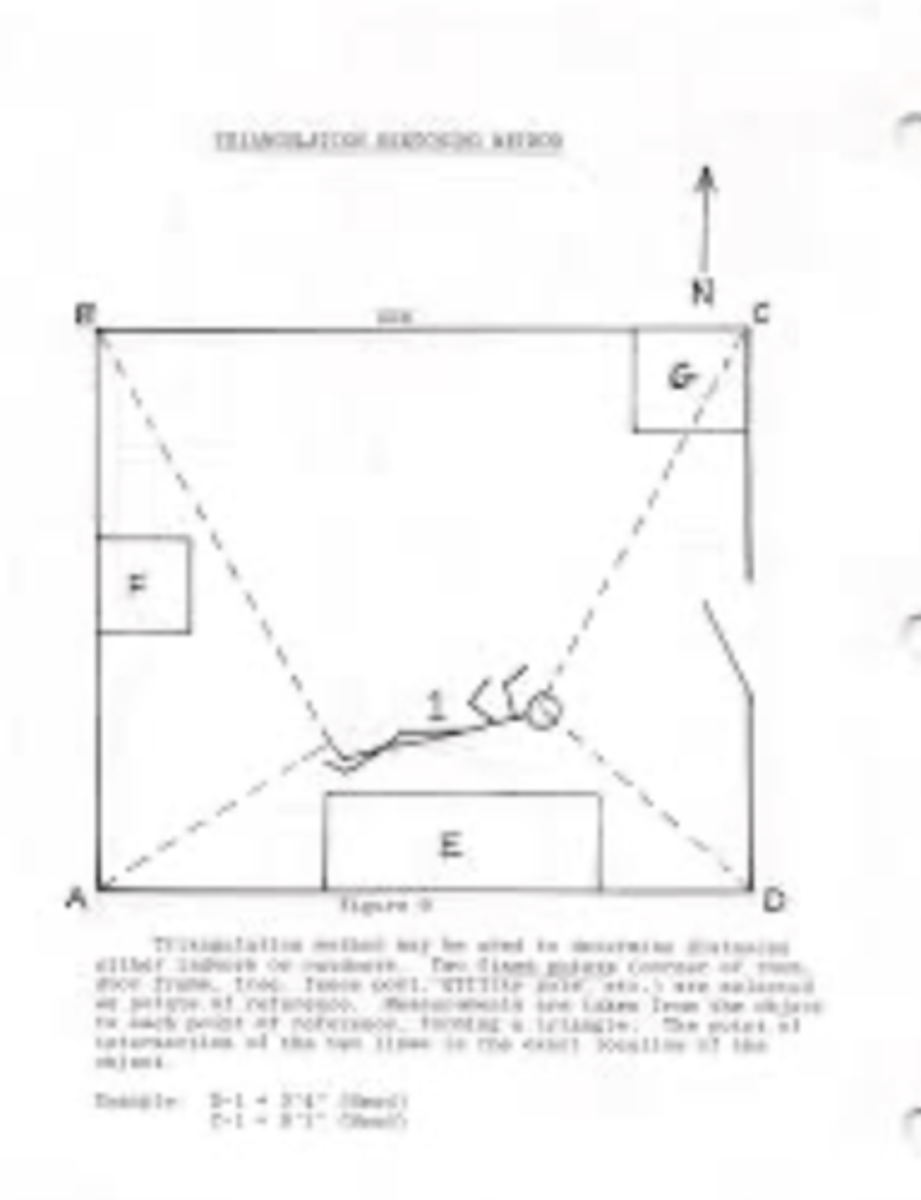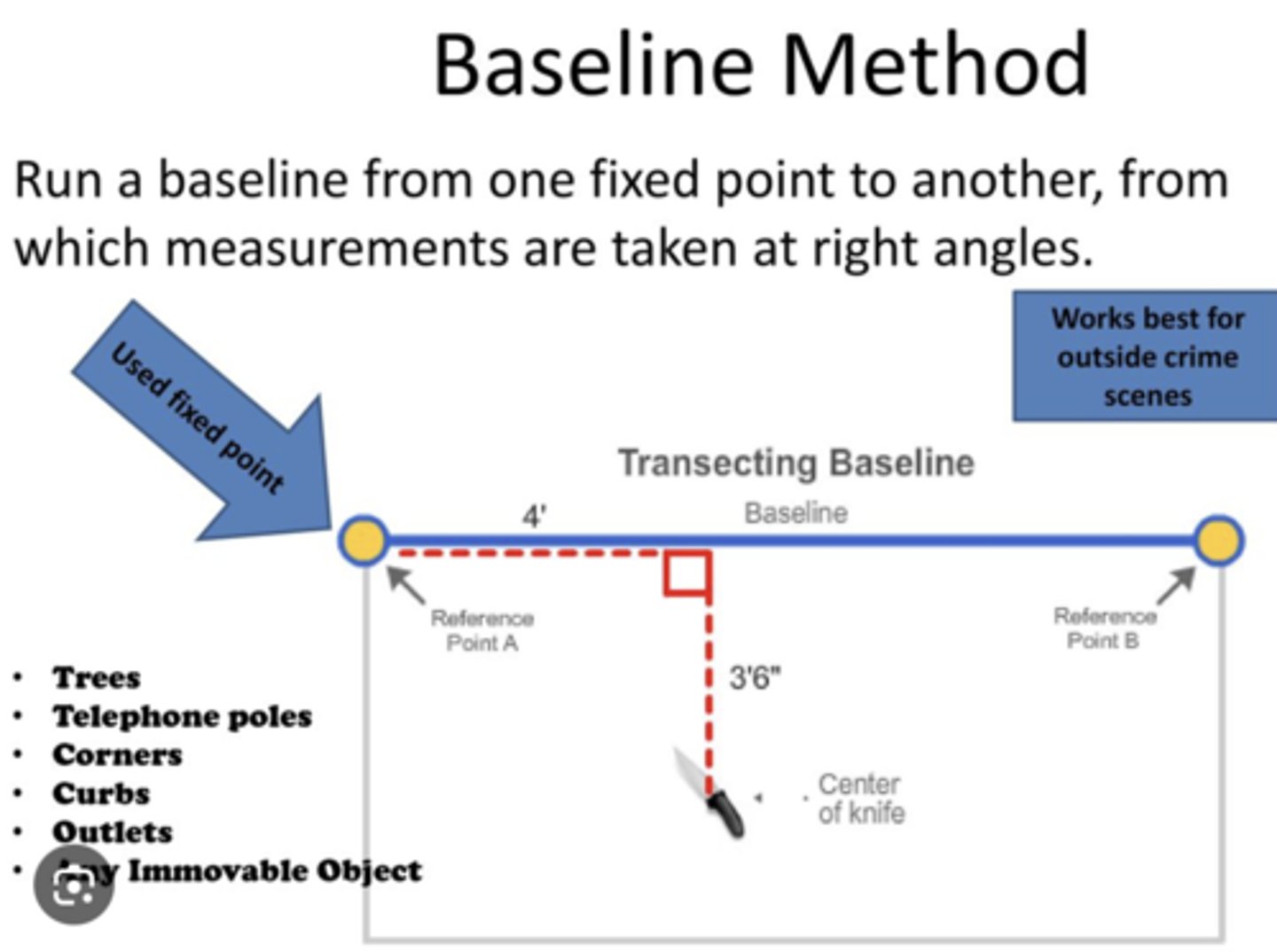Criminalistics 440 Final
1/82
There's no tags or description
Looks like no tags are added yet.
Name | Mastery | Learn | Test | Matching | Spaced |
|---|
No study sessions yet.
83 Terms
criminalist
scientist who studies forensic evidence
forensic specialists
photographs, latent prints, sketching, evidence collection, suspect processing, comparisons, report writing, courtroom testimony
CSI effect
the influence that crime shows such as CSI have on the public's perception of forensic science.
Edmond Locard
Locard's exchange principle: every contact leaves a trace
Basic prinicple of forensic science
Linkage Triangle
Victim, suspect, scene
firearms/toolmarks
unit looks at funcitonality, comparisons, distance determination, serial number restorations
trace evidence
paint chips, hair fiber, gsr, ignitable fluids
Match
2 objects that you are trying to determine if they originated from the same object
forensic chemistry
forensic alcohol + toxicology ante and postmortem
testimonial evidence
verbal or written statements provided by the victim, suspect, or eyewitness
can provide an understanding for motive or assist in explaining elements of a crime, subjective
documentary evidence
documents a crime, surveillance, photos, tape recording, emails
physical evidence
"real evidence" hair, fibersm friction ridge details, biological materials, tire impressions
- establishes who, what, when, where
class characteristics
Properties of evidence that can be associated only with a group and never with a single source.
random characteristics
characteristics unique to the item of evidence, can be directly associated to a specifc source
Basic actions of crime scene processing
assessing, observing, documenting, searching, collectiong, processing/analyzing
arrival to crime scene
10-97
Meet with officer
Major crime scenes have entry log
Assessing
Assessment is consistently employed throughout processing, assessing secondary scene, necessary equipment, additional personnel, lighting conditions, transitory evidence
Observing
Written notes are taken, photographs, videography, crime scene sketching, crime scene report
Searching
intrusive, will change state of the scene
secure all physical evidence is located, documented, collected
- zone, inward spiral, line, grid searches
Collection
Do not collect until documented, if there is a need to go out of sequence it needs to be written in the nites
PROPER collection to preserve integrity
Processing/analyzing
consider if collecting an item of evidence would yield better processing results back at station or crime lab
intrusive process
Departure
10-98
ISO
higher = brighter
how sensitive the camera's sensor to lighting is
Shutter speed
how fast the shutter opens and closes, determines the amount of light and motion blur
slower = no motion
higher shutter speed - lots of motion
Aperture
opening of lens thru which light passes
wide = low depth of field, more light
small = less light, greater depth of field
depth of field
what is in focus from foreground to background
overall photograph
depict general condition or layout of crime scene or evidence
incorporates landmarks
taken from 4 corners, should be overlapping
mid range photograph
evidence establishing relationships to others
close up photographs
every detail of evidence, entire subject is in focus, pictures with and without scale
crime scene sketch
serves to document layout, orientation, spatial relationships
not drawn to scale
PHOTOGRAPHS FIRST
birdseye sketch
most common, aerial view
only horizontal evidence

elevation sketch
verical surface like bullet holes, spatter, shoeprint

exploded sketch
floor folded down, vertical walls
to see spatial awareness on both horizonal and verical surfaces

perspective sketch
3d, most realistic
basic elements of a crime scene sketch
heading/block: name, date, case #, location, description of scene
diagram area: drawing graphically, showing scene and evidence
legend: defines various labels used in the sketch
orientation: N
scale: include for reference if one isn't used say "not to scale"
reference points: stationary objects to measure from
crime scene mapping
overall documentation of the size of the crime scene
items of evidence must be fixed
several methods, best depends on the circumstances
rectangular coordinates
easiest for indoors
well defined boundaries
evidence fixed by measuring at a right angle
2 measurements are taken at 90 to cetner of mass of item of evidence

triangulation coordinates
most effective for fixing
2 or 4 measurements from 2 distinct points of item of evidence
regular shaped item, use 4 points
irregular use 2 points

station line / baseline coordinates
measuring tape extended out along cardinal direction and measurements are made from evidence to baseline at right angles

crime scene report writing
do no use "we"
no hearsay
no speculation
info to include:
synopsis, scene preservation, lighting conditions, environmental conditions, actions, chain of custody
1st section of report
date and time of investigation, time of arrival, type of crime, location, contact person
2nd section of report
observation of the crime scene
3rd section of report
actions (photos, developing prints, swabs)
evidence collection
may change due to particular circumstances, collection of evidence if one of the last steps
improper collection can compromise future analysis
wear gloves and change between collecting each item of evidence
never use plastic (unless arson)
sharp object collection
put inside cardboard box, syringes should be placed in a plstic container made specifically for sharps
handguns/longgun collections
proper box based on size
zip ties can be used to secure
ammo should not be packaged
direction of muzzle noted on outside of box
toolmark analysis
vehicles, businesses, residences
bitemark evidence
photograph bite mark prior to swabbing or casting
if impression deep enough use microsil or silicone
shoeprint impressions
always take photographs of shoeprint impressions prior to collecting a cast or lift of the shoeprint
2-d ] lift
gel lift for most surfaces (oil, grease, dirt)
conventional black powder
electrostatic dust lifter for shoeprints on cloth, carpet
3-d lift
cast of shoeprint using dental stone, cast stone, plaster
electrostatic dust lifter
A device that operates by charging a plastic film, placed over the dust print, which creates electrostatic adhesions and draws the film onto the surface bearing the print. The dust particles are attracted to the film because of this charge and adhere to it.
dental stone
2lbs to 11 ounces water
stir 3-4 mins
30 min dry
24-48 hours done
paint
primer layer: adhesion to surface to protects against corresion
basecoat: contains pigments for color
topcoat/cleacoat: provides glossy finish and protection
collection of paint
wet: do not swab, use tongue depressor or plastic
dry: dependent on surface - cut/scrape paint
packaging: if on stick/plastic - wax paper
if dry: manilla envelope
hair layers
-Cuticle (outermost layer made of keratin)
-Cortex (middle layer with hard keratin for stiffness) pigment
-Medulla (core with flexible soft keratin)
human and animal hair
diameter of medulla/diameter of hair
humans = less than 1/3
fiber analysis
natural/manufactured
examiens chemical fingerprint of questioned fiber
use tweezers, tape lifts
gunshot residue
inorganic compounds of lead, barium, antimony, often found on shooter, hands, sclothing
striations
fine lines found in interior of barrel of gun
markings of firearms
firing pin, breech face, extractor, ejector
serial # restoration
usually stamped on a metal body or frame or plate
use chemical etching
distance determination (firearm)
when firearm is discharged, unburned, and partially burned particles of GP in additon to smoke are propeled out of barrel along with the bullet towards target
inked print
known print, exemplar
patent print
visible to the eye
factors affecting fingerprint ridge deposit
amount of contact/time
condition of object
environment
Cyanoacrylate fuming
Chemical treatment that utilizes superglue vaporization to produce a permanent white print. Amino acid reactions
Ninhydrin
A chemical reagent used to develop latent fingerprints on porous materials by reacting with amino acids in perspiration
Amido Black
protein dye stain that can develop faint bloody fingerprints on porous and nonporous surfaces
Small Particle Reagent (SPR)
A chemical used to process wet or greasy items for latent fingerprints, adheres to fats
processing tape
LCR, wet dye stain on adhesive
Wetwop
a special pre-mixed liquid formula that is designed to lift latent prints on the sticky sides of adhesive surfaces (i.e. most kinds of tape)
collection of touch/trace evidence
if dry, moisten cotton swab with 2 drops of sterile water
place in coin envelope
influences on trajectory
gravity, air resistance, muzzle velocity, angle of elevation, humidity, bullet shape, barrel length
vertical angle (trajectory)
angle at which a projective travels below or above a horizontal plane (positive and negative direction)
azimuth angle
horizontal angle between trajectory and fixed reference direction
evidence at autopsy
Trace evidence
Fingernail scrapings
Sexual assault swabs
Overlays ofwounds/patterns
Clothing
Muscle standards
Insects
minutiae
bifurcations, ridge endings, dots, enclosures
exposure triangle
iso, aperature, shutter speed
distance determination
farther away=less gunpowder
measurement used for bloodstains
mms
ejector marking
cartridge case thrown from the firearm breechface
The context of evidence can manifest itself in numerous ways. According to Rynearson and Chisum, these manifestations can be classified into five (5) categories. Which of the following is not a category?
-unpredictable effects
- functional details
- predictable details
- rational details
rational details